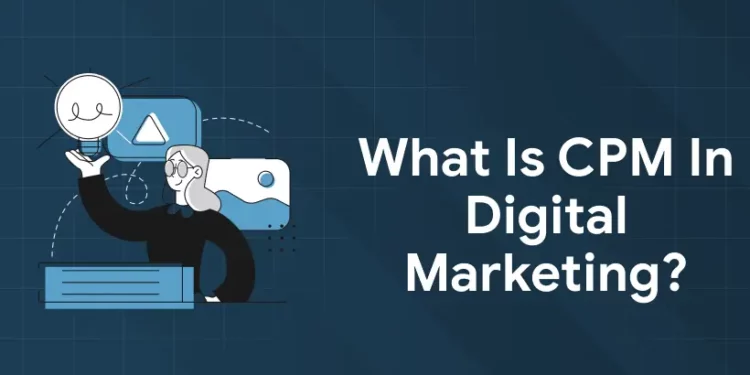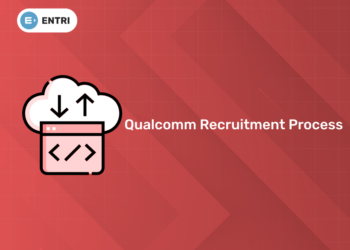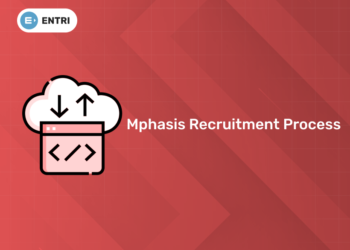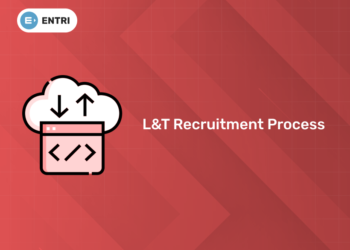Table of Contents
CPM is a frequent phrase in digital marketing and advertising that refers to the cost an advertiser pays for every 1,000 impressions of their ad. In digital advertising, CPM is frequently used to evaluate the efficacy and efficiency of advertising campaigns. Digital publishers must always search out successful strategies for increasing revenue and reaching a larger audience. One of the pricing techniques that helps publishers assess the effectiveness of their ad campaigns and maximise their monetization strategies is cost per mille (CPM), also known as cost per thousand. Let’s take a deep look into some questions around CPM marketing.
Learn Digital Marketing Fundamentals! Get Free Demo Here!
What is CPM in Digital Marketing?
Understanding “What is CPM?” as a digital marketer or publisher will aid you in researching metrics to evaluate a campaign’s effectiveness. The acronym CPM stands for cost per thousand or cost per mille. It’s the sum paid by a publisher or digital marketer for every 1,000 webpage impressions from an advertisement.
Every time a member of the target audience successfully views an advertisement, a CPM campaign has one impression. People see the advertisements on marketing channels like search engines, social media, and display adverts. If an advertiser pays £2 per CPM, for instance, they will pay £2 for each 1,000 impressions of the advertisement.
Factors Affecting CPM
1: What is the primary goal of SEO (Search Engine Optimization)?
Supply and demand
Advertisers in the digital marketing industry are in need of publication space to position their adverts, also known as creative assets. Both macroeconomic factors (economic stability) and microeconomic factors (product attractivity, demand) have an impact on this demand.
Hence, locations (websites, or feeds in this case) where those assets can be shown serve as a representation of the supply. Another name for the supply is inventory. A portion of the demand is created by every business with a product or service to offer that is interested in digital marketing. The supply providers are subject to the same rules.
Every advertiser aspires to have his product appear on a website that prospective buyers frequently visit. The problem is that he won’t be the only one in a crowded market. The cost of the inventory slot will increase as more advertisers attempt to bid on it, affecting the CPM.
Seasonality
There are times of the year when your CPM tends to rise. Shops compete fiercely to attract customers during these times:
- Holidays. Your CPMs will undoubtedly increase during the gift-buying season, particularly around significant holidays like Christmas, Easter, Valentine’s Day, etc.
- Sales. Advertisers increase their campaign investments during the two main sales waves, which are the winter and summer. They are able to clear out inventory to create room for new products or collections by offering discounts.
It is difficult to understand or attempt to control seasonality. Around such times of year, every advertiser will try to sell their products by placing a bid. To make sense of such figures, the best course of action is to anticipate these seasonality peaks and provide the appropriate funding to your campaigns.
Choice of advertising platform
Your choice of social media platform will have an impact on your cost per impression (CPM). On the platforms, your CPM will range from the most costly to the least expensive as follows:
- Snapchat
- TikTok
However, this is subject to change. Remember that TikTok is expanding quickly, but Facebook and Instagram are currently the standard platforms for ad placement. The powers of nature could soon shift. Please remember that you should use the platform that best suits your audience, not the one with the most buzz.
Audiences size
Your CPM will be minimal if you wish to promote to everyone. However, you won’t connect with the correct audience, your conversion and sales rates will plummet, and all you’ll gain for a pittance is annoyance.
Your CPM will rise in proportion to how precisely you target your audience. The following audience constraints affect your CPM:
- age
- sex
- geographic location
- interests
However, targeting the proper audience will ensure that your advertising are viewed by your ideal customer profile (ICP), increasing your sales.
Geography
The level of development of the online industry in the country you are targeting has a direct impact on your CPM. Thus, there is a clear correlation between the strength of the internet industry and high value CPM.
Your CPM is also influenced geographically by the purchasing power of the people in the nation you are targeting. Bidding will be more aggressive since countries like Germany, the US, France, or the UK will earn greater CPMs.
Campaign target
Your campaign goal affects your CPM. You should ask yourself what you hope to accomplish with your campaign. There are three different kinds of campaign targets, each organised like a funnel. The awareness target for your campaign will be at the top of the funnel. Reach and brand recognition are the outcomes you hope to achieve with that campaign.
Consideration is your campaign objective in the middle of the funnel. This area offers a plethora of characteristics to target, including traffic, engagement, app installs, video views, lead generation, and more.
Conversion will be the campaign’s primary goal at the very bottom. Naturally, conversions, catalogue sales, in-store visits, etc. are what you want to achieve. When attempting to fix on bottom-funnel targets, the CPM will go up when you attempt to fix top-funnel targets. To keep a relatively stable CPM, we advise you to focus on a varied focus based on your targets and seasonality.
Creative efforts and Ad format
Static attracts less attention than video. It is true. Increased attention translates into more impressions, which in turn lowers your CPM. Generally speaking, make sure the format and size of your advertisement match, whether it is static or not.
Regarding advertisements, there is also the issue of quality. Your audience will likely report your creative asset if it doesn’t make sense visually or if it doesn’t deliver a strong message, which will reduce the quality of the advertisement.
Become an AI-powered Digital Marketing Expert
Master AI-Driven Digital Marketing: Learn Core Skills and Tools to Lead the Industry!
Explore CourseHow to Calculate CPM?
To calculate CPM, divide the ad expenditure by the number of impressions and multiply by 1,000.
The formula for CPM is:
CPM = 1,000 * ad spend/impressions
Since the early days of online marketing campaigns, CPM has been one of the few industry standard pricing methodologies for figuring out advertising expenses and pricing web ads.
The industry standard CPM still offers numerous advantages for marketers wishing to track their ad impressions, even if campaign analysts and strategists now have access to a multitude of data and metrics to assess total impressions—digital views, user engagement, and ad effectiveness.
A CPM digital marketing campaign is a popular way for advertisers who prioritise brand visibility and brand awareness to increase a brand’s profile. Moreover, the number of successful ad displays is not the only factor to consider; another is the approximate number of ad views that the ads received on a certain webpage.
For new businesses, launching a CPM campaign across many websites that are accessible on desktop and mobile platforms is an effective tactic. Through generating a substantial amount of views or impressions, the business can increase brand awareness.
Learn Digital Marketing Fundamentals! Get Free Demo Here!
Strategies to Optimize CPM
Produce quality content
It may seem apparent to state the obvious, but we cannot emphasise enough how crucial it is that you give your visitors material that will entice them to return again and time again. Not only does content generate traffic to a website, but it also needs to work properly and offer a positive user experience. Be careful because poor UX design and a sluggish page load might negatively impact the functionality of your website. Regularly generating high-quality content is also crucial.
Optimize floors
Contrary to popular assumption, monetizing a website is a continuous process. It involves ongoing performance analysis, trend forecast, and research. Once the script goes online, don’t expect your website to start making money on its own. You can have a big impact on your performance by finding out how to optimise the flooring on your website. Floors must be modified in accordance with market conditions and demand. Reduce your floor price if there is less demand because otherwise no one will purchase your goods because it is too expensive in comparison to your rivals. Try gradually raising your floor if there is a lot of demand until you temporarily identify the sweet spot. Things change, so what is effective today might not be tomorrow.
Try different ad units
You can significantly affect your website’s performance by changing its ad environment. Try switching around your ad units if you’re in a slump and don’t feel like anything is getting better. Though don’t be scared to attempt new things, basic, standard ad units usually work better because advertisers are accustomed to these sizes and there is a greater demand for them. Examine your data from earlier periods to see what worked then. Is there anything you could do differently this time? Consider unconventional ideas. If demand is low and your fill rate is poor, you may occasionally need to withdraw certain units for a brief period of time. If your website is full of unmonetized adverts, your visitors will have a bad experience, and since you value their visits, you want them to come back often.
Add new ad units
A well-organized and easily navigable advertisement landscape is critical to the functionality of your website. A website that is overflowing with advertisements rarely offers a positive user experience, and as previously mentioned, you want satisfied website users who will visit your site again. Having said that, if the website is entirely or largely unmonetized, introducing new units can be quite helpful for increasing revenue. There are frequently a lot of opportunities that go unexplored. Kiosked advertisements are completely adjustable and may be positioned anywhere on the page where they blend in without detracting from the user experience.
Partner up with the demand side
It goes without saying that you require an inventory buyer. Although it is more likely that you are connected to a few demand partners through an ad network or something similar, you can also have direct relationships with advertisers. It’s important to keep in mind that when it comes to demand, there is a significant difference between quantity and quality. Having high quantities of worthless demand is not worth nearly as much as having high quality, sought-after demand. Make every effort to bargain for the connection of more high-caliber demand partners to your website. Your success with demand is greatly influenced by your geolocation and content.
Focus on SEO
Gaining website traffic is essential for SEO, and website traffic is essential for your business. It’s worthwhile to take the time to become familiar with the fundamentals of SEO or to get assistance from an expert. The key to SEO is making sure your website is easy to navigate and has well-optimized content so that search engines will index it and direct users to it from the results page. You may enhance your SEO by making your website more user-friendly and faster, incorporating header tags, relevant keywords, and backlinks, and optimising your photos and videos.
Benefits of Using CPM in Marketing
- Cost-effectiveness: With CPM advertising, you just pay for impressions, not clicks or conversions. In comparison to other digital marketing tactics like CPC or CPA, it offers a predictable and frequently reduced cost.
- Enhanced Brand Awareness: By reaching a larger audience, CPM campaigns can aid in enhancing brand visibility and awareness. Your ads are seen by more people because you are paying for impressions, which could increase the visibility of your company and message. Businesses looking to launch new goods or services or boost brand recognition may find this very helpful.
- Measurable Outcomes: CPM campaigns give you access to useful measurements and statistics that let you assess how effective your advertisements are. Key performance measures like as impressions, clicks, conversions, and CTRs can all be monitored. You may make wise decisions, optimise your CPM approach, and raise the overall effectiveness of your digital marketing campaigns by examining this data.
- Effective for Video Ads: CPM is a great option for displaying video advertisements. The popularity of video material is growing, and CPM gives you the opportunity to show off your films to lots of people. Whether you utilise pre-roll or in-stream video advertisements, CPM guarantees that people see your films, which improves message delivery and audience engagement.
Conclusion:
Cost per mille, or cost per thousand, is the average cost of 1,000 advertisement impressions, regardless of medium. In addition to being a metric used by businesses to assess the cost and effectiveness of a marketing campaign, it is one of the numbers used to charge advertisers for web ad pricing.
Entri App : Digital Marketing Course
The information and abilities provided by the Entri Elevate Digital Marketing Course are essential for success in the digital age. People who are interested in jobs in performance marketing but are new to digital marketing are the target audience for this course. You will discover new digital marketing channels, develop successful campaigns, and pick up a variety of tools and strategies for drawing in and interacting with consumers. These courses also give you the skills you need to succeed as digital marketer and are flexible and reasonably priced.
Learn Digital Marketing Fundamentals! Get Free Demo Here!
Frequently Asked Questions
What is CPM in digital marketing example?
The cost per thousand impressions, or CPM, pricing model requires the advertiser to pay each time an ad is shown. For instance, if the cost-per-impression (CPM) is $20, the advertiser will pay $20 for each thousand impressions—that is, for every thousand times the advertisement is viewed.
How is CPM calculated?
You must multiply your CPM rate by 1000 and divide the overall cost of your online advertising by the total number of impressions. Your CPM would be $5, for instance, if your advertising campaign costs $500 for 100,000 impressions.
Why is CPM important in marketing?
CPM ads increase awareness, allowing consumers to have a better sense of unfamiliar products. Provide highly relevant leads: Businesses can contact only the most relevant clients by refining their targeting options through CPM adverts.
What is the CPM formula?
The formula for CPM is:
CPM = 1,000 * ad spend/impressions










